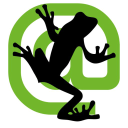I Built a Fitness Management Software That Makes $60K/Month
Hello! Who are you, and what business did you start?
Hello guys! My name is Katherine Barlow, and I’m the co-founder of Wellyx. I started a cloud-based management software for the wellness and fitness industry in 2015.
We provide management and marketing solutions to gyms, spas, dance studios, salons, yoga studios, and other fitness businesses. Our fitness management software is an all-in-one solution that streamlines operations, simplifies bookings, and cuts costs to maximize gains. We are making $60k per month right now and hoping to touch $150k by the end of the year.
What's your backstory, and how did you come up with the idea?
I’m a fitness enthusiast who loves trying new techniques, tools, and strategies. The idea of building fitness software struck my mind while I was managing a local health club in London.
We were looking for software that could help us manage stock and smooth operations while catering to our marketing needs. But after trying multiple software, I was more than frustrated; I was upset. That’s when I decided to build a wellness software of my own.
I discussed the idea with my...

Download the report and join our email newsletter packed with business ideas and money-making opportunities, backed by real-life case studies.

Download the report and join our email newsletter packed with business ideas and money-making opportunities, backed by real-life case studies.

Download the report and join our email newsletter packed with business ideas and money-making opportunities, backed by real-life case studies.

Download the report and join our email newsletter packed with business ideas and money-making opportunities, backed by real-life case studies.

Download the report and join our email newsletter packed with business ideas and money-making opportunities, backed by real-life case studies.

Download the report and join our email newsletter packed with business ideas and money-making opportunities, backed by real-life case studies.

Download the report and join our email newsletter packed with business ideas and money-making opportunities, backed by real-life case studies.

Download the report and join our email newsletter packed with business ideas and money-making opportunities, backed by real-life case studies.





































